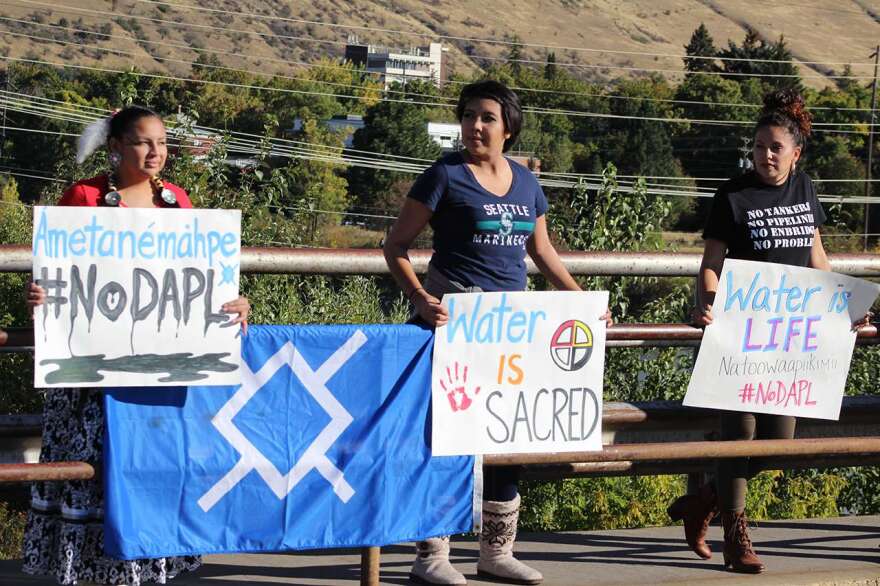Sydney MacDonald is not a conflict journalist. But she felt like one this weekend while covering the ongoing protest of the Dakota Access Pipeline in North Dakota.
"There were two tanks and lines of probably a dozen sheriff's department cars and authorized vehicles behind them, and then barbed wire and cinder blocks," MacDonald said.
MacDonald is a photographer for the Montana Kaimin, the student newspaper at the University of Montana. The UM senior was one of 17 students who traveled to the Standing Rock Sioux Reservation this weekend on a university trip to learn about the protest and the encampment that supports it.
MacDonald says she jumped at the chance to visit the camp.
"As a journalism student, I had been looking for an opportunity to go observe and be a little more educated about what's going on there," says MacDonald.
MacDonald has been following stories from Standing Rock actively since news of protests at the pipeline construction site first broke earlier this summer. But she didn’t think breaking news articles were giving the whole story.
"I would say it's the really high action moments are what's out there right now for a lot of people, but getting more into the meat of history. I think people don't realize that," MacDonald says.
MacDonald says she was surprised by the separation between the area where people are protesting and the relative calm in the Sacred Stone Camp, where a few thousand people are now living. UM students did not participate in any direct action protests, but there were times when elements of protest bled into camp life.
MacDonald says unmarked helicopters flew circles around the camp late into the night, and spotlights illuminated the no-man’s land between the edges of the camp and the hillside that marks the boundary of the pipeline right-of-way.
I asked Joseph Grady, a program director at the University of Montana who led the student trip, how the potential for violence weighed into his planning. Specifically, if he's afraid for student safety, why bring students on a university sanctioned trip to the protest site?
"It's not a protest site. It's tribal land. Tribal land is not a protest site, it's a place for people to have their home," says Grady. "We were invited by the tribes to come out and exist safely in reservation land to speak with and interview community members."
But the UM delegation wasn’t just there to observe. They said they went, "to show support for the local region," and also ferried donations to the camp, like canned food, a water filter, warm clothing and school supplies. Donations covered travel expenses and the university provided vehicles.
Grady does not consider the donations or the show of unity as participation in the protest. To him, the Sacred Stone Camp is separate from the nonviolent resistance at the protest’s front lines.
"These kids didn't go to stand on the front lines or stand as water protectors or anything else," Grady says.
Grady says upon arrival, students underwent camp orientation. They learned from tribal elders about appropriate behavior and adopted camp life for 24 hours.
UM students woke at 6:30 a.m. to tribal elders singing prayer songs over loudspeakers. They welcomed people who ran from Flagstaff, Arizona, and riders on horseback from South Dakota, to the Standing Rock Reservation. They unloaded truckloads of donations and shared stories in the cook tent.
"I found that to be incredibly valuable for the students," says Grady. "It's the kind of knowledge you don't get in the classroom. It’s the kind of thing where if you're interested in Native Studies, this experience is second to none. Essentially we walked into an encampment that existed out of the 1600s.
Grady says many students are writing papers and articles based on their experience at the camp, and the group is organizing a panel discussion and presentation to deliver to people in Missoula in the next month.


